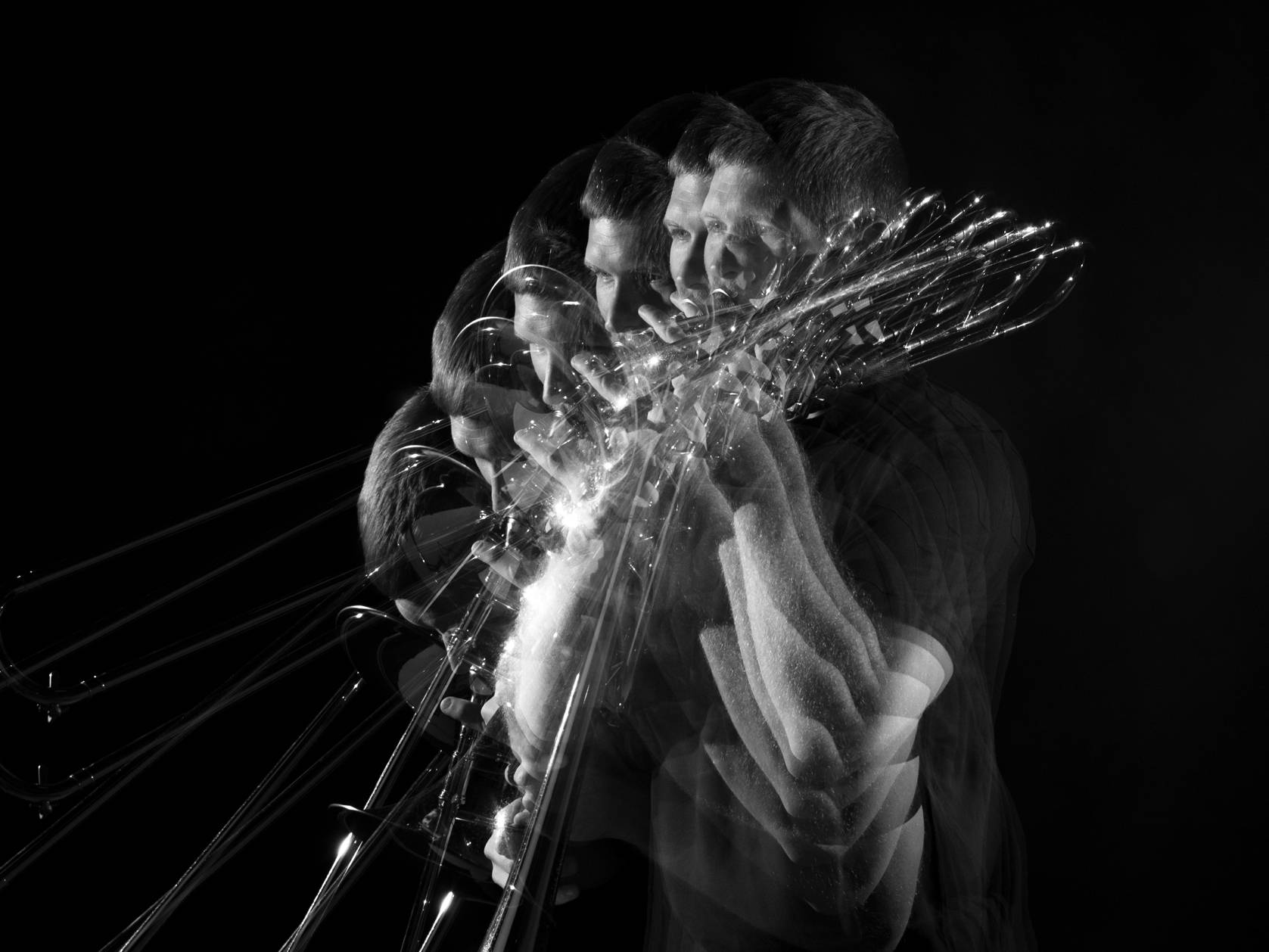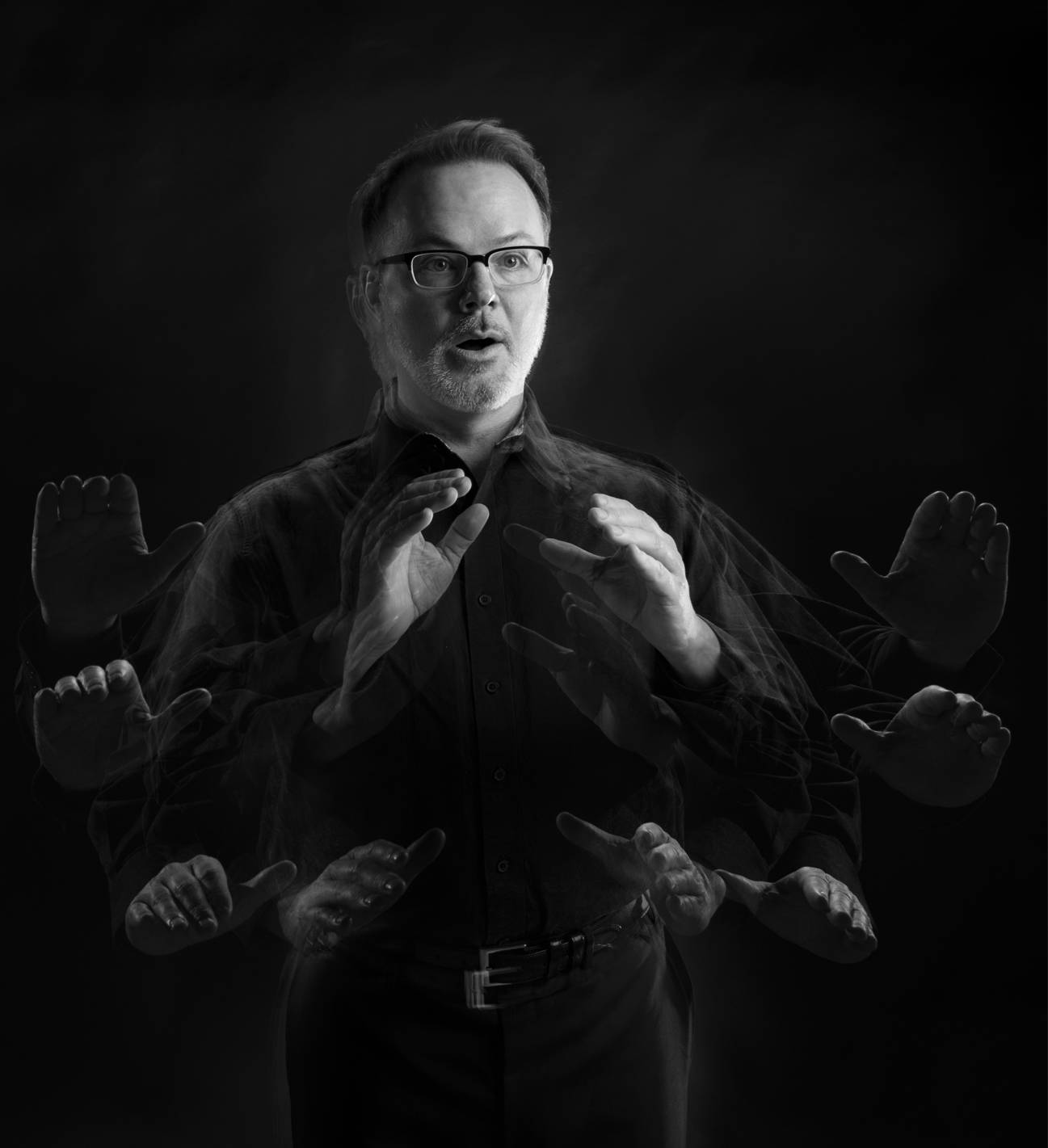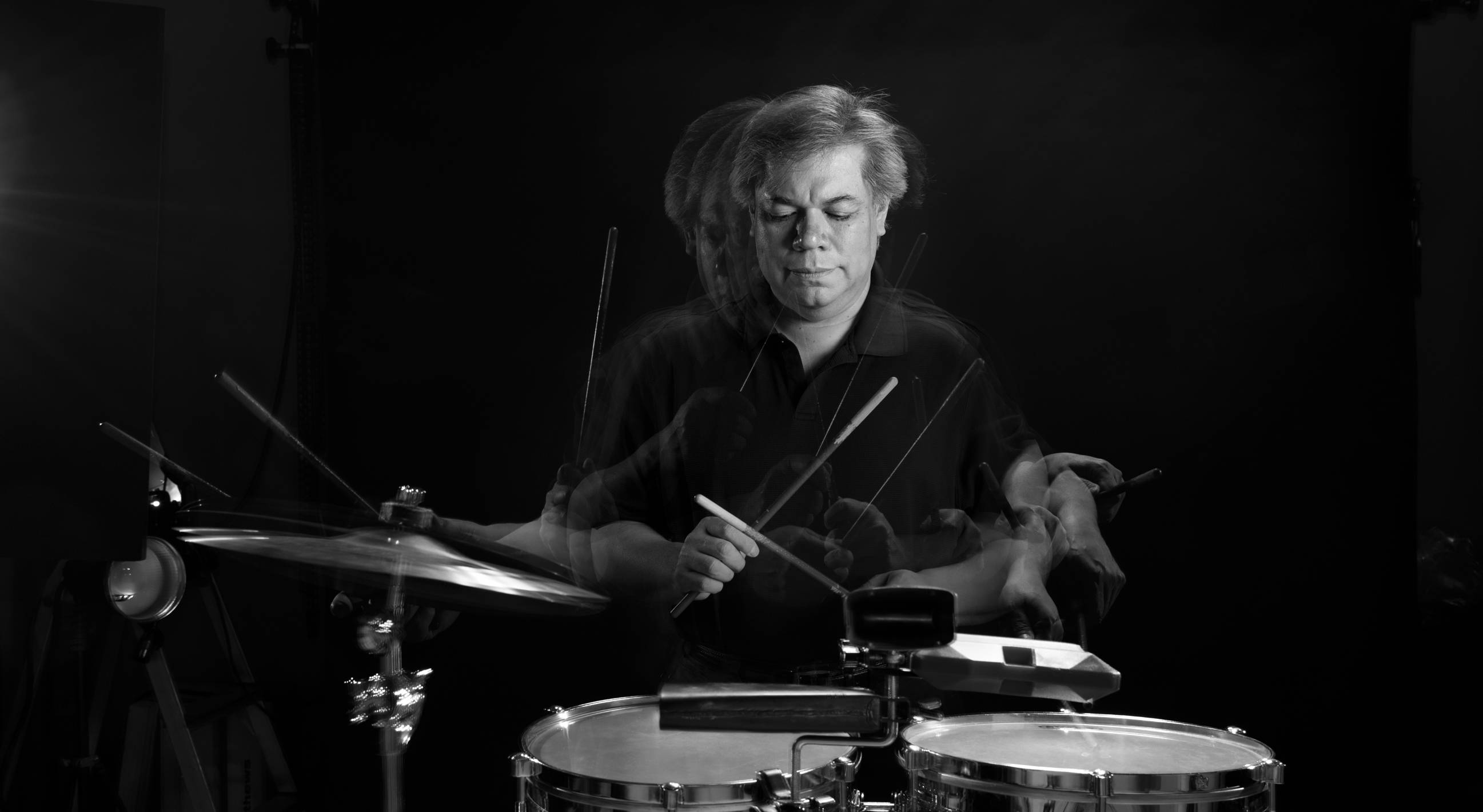
Making beautiful harmony
by Julie Cooper
Singers, composers, honored faculty add to national reputation of the School of Music
The School of Music has a lot to sing about. Grammy-winning faculty, award-winning opera productions and musical performances, a stellar placement record for music teachers, the International Piano Festival, and the Bobcat Marching Band are just a few things that have helped Texas State build a national reputation for students seeking music degrees.
These days at Texas State’s School of Music, undergraduates can major in general music, classical, jazz performance, and sound recording. There are more than 30 student ensembles: choirs, wind bands, a symphony orchestra, mariachi and salsa ensembles, jazz bands and combos, and ensembles for opera, modern music, and percussion.
One could say that excellence is built into the program: An audition is required of every School of Music applicant. "We probably accept no more than two-thirds of the students who audition," says Dr. Thomas Clark, the school’s director. "Sometimes, it is about a 50 percent acceptance rate," Clark adds. In the case of the Sound Recording Technology program, only 15 freshmen are accepted each year, but four times that number apply to it. The program is housed in the former San Marcos Fire Station.
The school’s reputation for putting students on a path to success in music — whether it is teaching, performing, or composing — is an example of the best learning from the best and brightest. "We are developing the future leaders in the choral world," says Dr. Joey Martin. "And we can point to how that is happening."
Words that are repeated over and over in interviews with both faculty and graduates are "passion," "caring," and "support."
Texas State’s School of Music has more than 600 music majors. That number puts the school easily in the top five in the state, says Dr. John Fleming, dean of the College of Fine Arts and Communication.
"There is a general notion that this is a little regional music department," Clark says. "It is important to recognize we are a major School of Music." In terms of size, the University of North Texas has the largest music school in Texas. But size isn’t what’s important.
"We have grown our faculty in the nine years I have been here. We have 90 specialists from full-time to adjuncts, all of whom need space to teach, offices, and, in some cases, teaching studios, which are bigger offices with soundproofing."
Faculty grows
Among the 90 faculty members are 50 internationally active performing, conducting, or composing artists. The group includes 10 Grammy Award winners, who share another 13 Grammy nominations. These instructors have performed with artists ranging from Frank Sinatra to the Dixie Chicks, and from Ella Fitzgerald to the Eagles.
Craig Hella Johnson, with eight Grammy nominations and one win to his name, became an artist-in-residence in 2012. This year, he is a professor of practice. An internationally recognized choral conductor, composer, and arranger, Johnson is the founder and artistic director of the Austin-based choral group Conspirare. In 2013, Johnson was named Texas Musician of the Year. In 2016 the choral group recorded his concert-length choral piece, "Considering Matthew Shepard," which garnered a Grammy nomination.
Since Dr. Carolyn Watson joined the university three years ago, the orchestra program has expanded dramatically. She led the 35-member Chamber Orchestra in May 2017 on a tour of European capitals, where the concert in Prague was a sellout. When she joined the university as director of orchestral studies, Watson says she was struck by the enthusiasm of the students — and their potential.
The University Orchestra, which was established in 2016, includes non-majors, alumni, faculty, and staff. The Chamber Orchestra is made up of the elite players, and Watson says she expects it to be more competitive in the future. She says a national student composition competition launched in fall 2017 will culminate in the spring with the Texas State Symphony Orchestra recording the winning piece. "There is a great deal of support from the music faculty. They really want this to be a leading orchestra program on a national scale," Watson says.

activities and associate dean.
For composer Jack Wilds, the deciding factor in choosing Texas State was the chance to study with Michael Ippolito, the coordinator of music composition. "The music faculty here is really good. They care deeply about their students," says Wilds.
Wilds, who received his master’s in May 2017, composes music for secondary school bands and professional musicians. He has more than 30 publications for band and choir, and trombone and trumpet. He is the composer-in-residence for the Austin Children’s Choir and the co-director for music at a San Marcos church. In the fall, he began teaching two university courses — music theory and aural skills.
Latin music
While growing up in San Antonio, John Lopez was exposed to some of the best Latin music around. His father, Arturo Lopez, was the founder and director of Mariachi Chapultepec; his mother, Beatriz Llamas, also known as La Paloma del Norte, was a renowned mariachi and conjunto singer. Lopez earned his bachelor’s and master’s degrees at Texas State before joining the faculty and overseeing the marching band percussion.
Clark considers Texas State’s Latin Music program unrivaled. "Most college music programs don’t have salsa or Afro-Caribbean ensembles at all. Even in Texas, most don’t have a college-level mariachi ensemble," Clark notes. "We have been doing that at a prize-winning level since John Lopez began the Latin ensemble programs."
In 1995, Salsa Del Rio became a class, and two years later Lopez formed the mariachi ensemble, Mariachi Nueva Generación. Each year since 1999, the ensemble has taken first or second place at the Mariachi Vargas Extravaganza. In December, the group took first place in the San Antonio event with vocalist Alondra Morales placing second in the University Solo Vocal Competition.

Salsa del Rio is a three-time winner of Premios a la Música Latina and the 2007 winner of the 30th annual Downbeat Student Music Awards. By 2003, the program had grown enough to be called Latin Music Studies and Lopez became a tenured associate professor.
Vocal performance
Dr. Joey Martin, director of choral activities, has led four of the six university choirs since joining Texas State 19 years ago. Choirs under his direction have appeared at the Southwest Division of the American Choral Directors Association (ACDA), the International Kodàly Festival, the Texas Music Educators Association Convention, the National Endowment for the Arts, and the National Conference of ACDA. Martin directed the Texas State Chorale in concerts at Nelson Mandela Metropolitan University and throughout South Africa. He believes that music students are picking Texas State over other schools because of its reputation, scholarships, and faculty. "The fact that our ensembles are so recognized through the country and the world — it’s a draw for students," Martin says.
Growing up in the Rio Grande Valley, Maj. Leonel Péna (B.A. ’02) sampled the School of Music when he attended a high school summer camp. "It exposed me to the music program and the quality of the faculty. I liked everything I saw," says Péna, who now is the conductor of the U.S. Army Chorus and director of the U.S. Army Voices. Péna majored in music and minored in military science, something he said his parents didn’t even know was possible. Today, he leads choral groups for the president, Congress, heads of state, and other VIPs.
In 2016, Texas State Opera Theatre commissioned a new opera, Lady Bird: First Lady of the Land, which put the spotlight on LBJ’s 1964 campaign and the first lady’s work on his behalf in the South. The opera was nominated for several awards and took third place as the National Opera Association’s Production of the Year. Texas State students have been recognized by the Metropolitan Opera, National Association of Teachers of Singing, and competitions such as Lois Alba, MacAllister, and Vargas.
Sarah Tucker (B.A. ’09) is a rising young opera soprano who chose the university because of its reputation for music education, her original degree plan. "I ended up switching to a degree in performance, but that foundation of academics has served me well throughout my career.
"The opera program gave me performing opportunities and necessary experience to begin auditioning in apprentice and professional capacities, and the excellent theory and history classes more than prepared me for what I would encounter at graduate school. In fact, I’d say in those departments Texas State School of Music is on par with or superior to the major conservatories and larger music programs in the United States."
Last fall, Tucker appeared in main stage productions with Opera Philadelphia and Opera Connecticut. "I would tell a potential music student that the knowledge and passion of the faculty go far beyond the minimum curriculum requirements, so if you’re interested in learning more and challenging yourself, your professors are excited and happy to help you," she says.
Music studies
Associate Director Lynn Brinckmeyer, coordinator for music education, explains that students who wish to become music teachers must be accepted to the College of Education only after completing requirements in the School of Music. Clearly, the high standards pay off. "Our students have 100 percent placement," Brinckmeyer says. "We get calls all the time from schools that want our graduates."
Christian and Audrey de la Cruz, both of whom graduated from Texas State in 2010, direct choirs at San Antonio secondary schools. The couple has remained active with the university’s choir camps and an alumni committee that awards music scholarships.
Audrey de la Cruz, now choir director at Barbara Bush Middle School in San Antonio, discovered Texas State as a high school junior in choral competitions. Today, she has 300 sixth-, seventh-, and eighth-grade students who look to her for direction, while her husband directs the choral program at nearby Reagan High School. "There is a real passion for helping students find their voice. It is really empowering, especially for the middle school where I teach," she says.
These days at Texas State’s School of Music, undergraduates can major in general music, classical, jazz performance, and sound recording. There are more than 30 student ensembles: choirs, wind bands, a symphony orchestra, mariachi and salsa ensembles, jazz bands and combos, and ensembles for opera, modern music, and percussion.
What the School of Music lacks is space. Programs are currently scattered across six buildings. The Music Building, formerly Strahan Gym, was built in 1956 and renovated for music students in 1982. Other music facilities include Evans Auditorium, Nueces, Lampasas, Colorado, and the Recital Hall in the Performing Arts Center. "We’re delighted to have the Performing Arts Center," Clark says of the building that opened in 2014. "It’s inspired everybody including our guest artists who come in to perform in the new recital hall. They say, ‘this is the greatest place I’ve ever played in.’ As a learning laboratory, it makes us all hungry for having that quality in all of our facilities."
In August 2017, the Texas State University System Board of Regents approved a new 10-year University Master Plan that includes a new music building and an expansion of the Performing Arts Center, which will accommodate a third performance venue plus teaching and practice space. The university hopes that over the next 10 years alumni and donors will recognize the importance of having these new facilities and contribute support.
"We need facilities that match the quality of the faculty, the students, and the ensembles," Fleming says. ✪